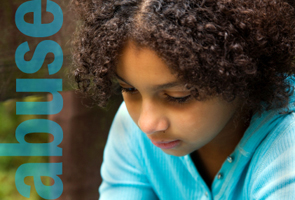The recent beating of a 13 year-old boy, captured on a cell phone by a student at the Jamie’s House Charter School in Houston, is yet another horrifying example of why corporal punishment ought to be permanently banned in all schools nationwide.
The cell phone video shows the student, Isaiah Reagins, cowering in a corner obviously surrendering as Sheri Lynn Davis, a 40 year-old physical education teacher, throws a desk and then crouches in front of him like a wrestler looking for an opening to attack. Other students can be heard laughing and clapping as Reagins is then dragged across the floor, repeatedly slapped, punched and kicked. The boy’s mother said her son suffered knots, bruises and a black eye from the attack.

|
Davis was placed on administrative leave on May 5, after the boy’s mother notified the school about the incident. Witnesses said Davis “snapped” after Reagins made fun of a special needs student. Several students told police officers that four or five teachers watched the incident and threatened them if the video ever went public.
“There is no excuse for a teacher to behave in this way with a child,” Jones told reporters after reviewing the video.
Davis was fired from the school and then issued a public apology during a press conference at her attorney’s office last week and an investigation is pending.
Her attorney, Chip Lewis, said there is more to the story than what was captured in the video. He said Davis was forced to be an educator, bouncer, and an enforcement officer in the classroom.
“There is a fundamental lack of security, of support and staffing for the teachers to provide a safe environment for these kids to learn in. We don’t have an excuse; we have an explanation as to what was going on — months, weeks, days,” Lewis said. “The cumulative effect of these teachers dealing with this is so untenable and contrary to a learning environment. It weighed on her.”
Days before the video of the Houston incident went viral on the Internet, ABC News reported that Gilbert Leal, a tutor in the Dallas Independent School District (DISD), is on a mission to “Bring Back Licks” or paddling in public schools.
Corporal punishment in DISD was outlawed five years ago years ago but Leal has been urging voters to back candidates in school board elections who will reinstate corporal punishment in Dallas schools.
“I want to bring back corporal punishment to Dallas,” Leal said, “Kids have no fear anymore. There are no consequences.”
This perverse embrace of violence as a means of disciplining students leads to incidents like the beating of Isaiah Reagins. And the problem appears to be widespread.
In 2008, a joint report by Human Rights Watch and the American Civil Liberties Union reported that over 200,000 schoolchildren were spanked or paddled in American schools. According to data from the Office of Civil Rights at the U.S. Department of Education, corporal punishment is legal in 21 states and is employed most frequently in Missouri, Kentucky, Texas, Oklahoma, Arkansas, Louisiana, Mississippi, Alabama, Georgia, South Carolina, North Carolina, Tennessee and Florida.
The highest percentage of students receiving corporal punishment was in Mississippi, with 7.5 percent of students. Texas had the highest number, with 48,197 students hit at school.
Data from the federal Department of Education and several scholarly longitudinal studies have also demonstrated that black elementary and secondary students endure physical punishment along with school suspensions and expulsions at dramatically disproportionate rates. During the 2006-07 school year, for instance, black students made up 17.1 percent of the nationwide student population but nearly 36 percent of those paddled in schools.
Black girls were paddled at twice the rate of their white counterparts in the 13 states using corporal punishment most frequently. And although boys are punished more often than girls, the report found that African-American students in general are 1.4 times more likely to receive corporal punishment.
These statistics paint this portrait even as society increasingly recognizes that physical discipline of children leads to children themselves becoming self abusive, cognitively stunted, and abusive of others.
Part of the problem is that reports like these reveal that many parents give consent to allow teachers or other school officials to physically discipline their children. But herein lies a very serious legal violation of children’s constitutional rights, specifically their Eighth Amendment right to be free from “cruel and unusual punishment.”
How can parents be allowed to waive a child’s constitutional right to be protected from cruel and unusual punishment?
Because we live in a society where corporal punishment of children has been a long-standing feature, it appears to be legally and politically justified to deny children the right to be free from assault at the hands of teachers and relatives. While there has been some outrage over the actions of Sheri Lynn Davis, some have touted her as a hero and as a victim of an unruly generation of youth that no longer responds to non-violent disciplinary tactics.
| To read more by Stacey Patton on this subject, click here. |
The notion that adults need to use physical violence against their own children or other people’s children to make them follow the right path is one of those undying untruths. It’s not the fear of violence that makes children follow the right path, but respect for their parents’ values as well as trust in their parents and adult supervisors.
Stacey Patton is the Senior Editor of The Defenders Online and a writer for the NAACP Legal Defense and Educational Fund. She is also author of a memoir, That Mean Old Yesterday, which discusses child abuse.
SOURCE: The Defenders Online
A Civil Rights Blog of the NAACP Legal Defense and Educational Fund web site.